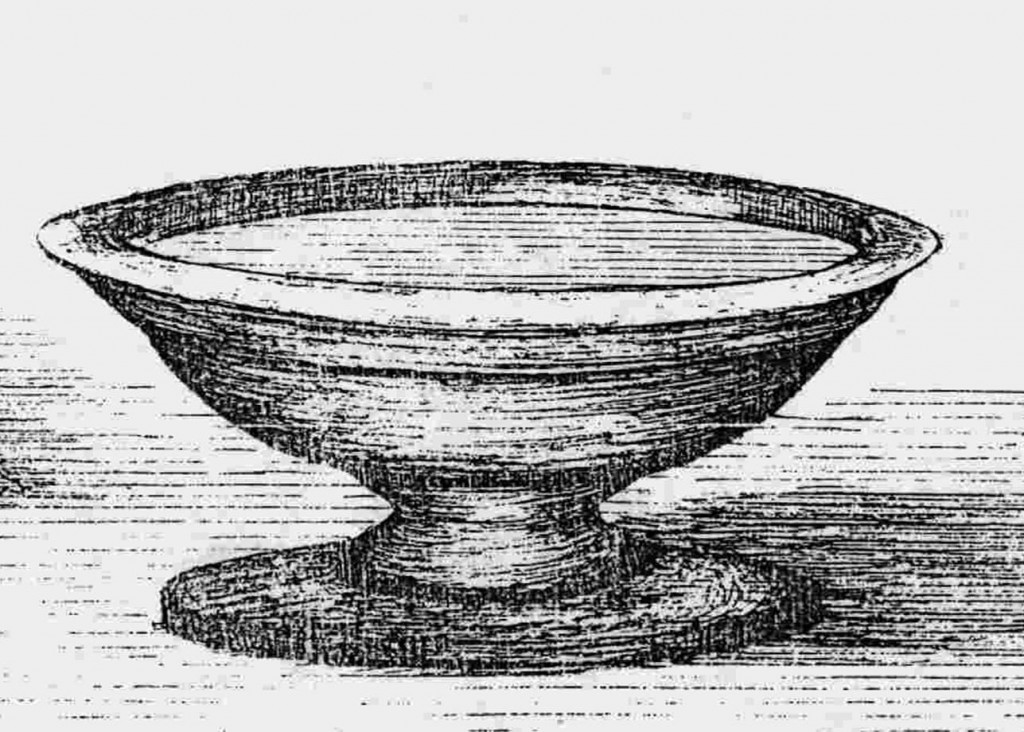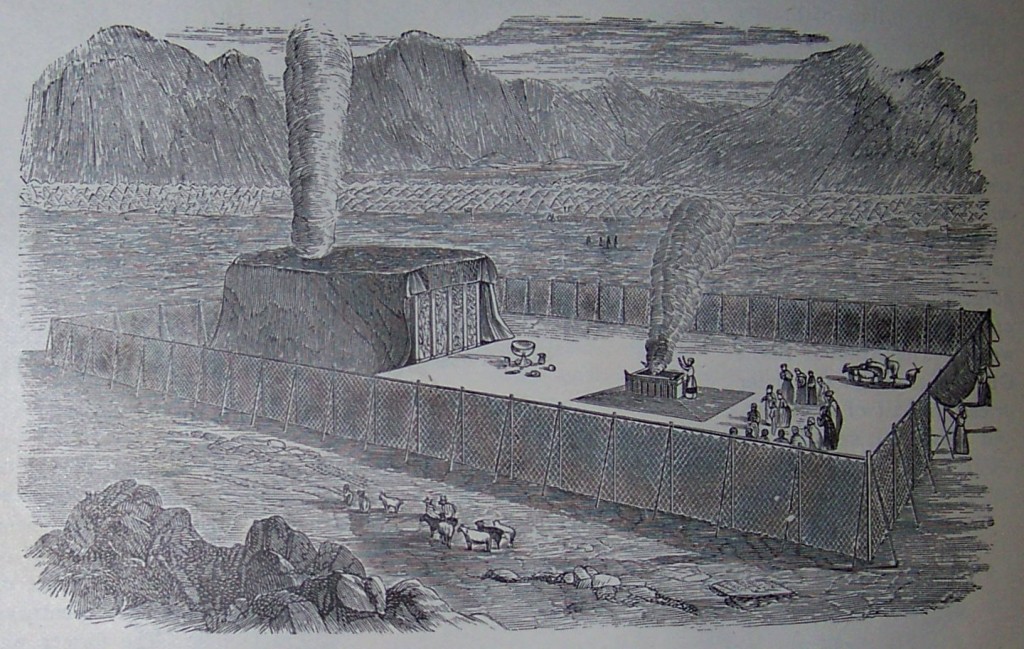“Make a bronze washbasin with a bronze stand. Place it between the Tabernacle and the altar, and fill it with water. Aaron and his sons will wash their hands and feet there. They must wash with water whenever they go into the Tabernacle to appear before the LORD and when they approach the altar to burn up their special gifts to the LORD — or they will die! They must always wash their hands and feet, or they will die. This is a permanent law for Aaron and his descendants, to be observed from generation to generation.” – Exodus 30:18-21
The Laver in the Wilderness
Situated in the courtyard, between the altar and the tent, is a large bronze basin. This basin, or laver, is positioned in the hot desert sun on a stand. The basin and its stand are constructed of brilliantly reflective bronze that was once used in the hand mirrors of the women of Israel. Priests would wash various tools and offerings in the laver, but most importantly they would wash themselves. The Bible gives us no dimension to this particular part of the Tabernacle, but it must have been at a height were the priest could wash both their hands and feet. Washing in this highly reflective basin allowed the priest to see a clear picture of themselves as they scrubbed away the dirt and grime accumulated in their sacrificial practices and desert living.
A Picture of our Worship
Not only does God’s grace allow us to be forgiven of our sin, but he also cleanses us from those elements in our lives that tend toward death. The cleansing process of God is not just the wiping away of one’s moral failings in an instant, but it is a purification of the heart, mind and whole being that occurs over a period of time. It is interesting to note that the priest of the Tabernacle needed to be cleansed on rather regular basis. I think it is helpful for us to think of the sanctification and repentance process in our lives, not as an endless gantlet of failure and shame, but the act if a loving father, teaching his children how to walk. This cleansing process of God is an extension of his goodness and kindness (Romans 2:4). In fact, God’s discipline and correction is a result of his great love (Hebrews 12:6, Proverbs 3:12). The process may be painful at times, but this important work of the Spirit is dislodging those things that keep us from rightly relating to God and one another. This work allows us to know him in greater measure. It also allows us to experience, in fullness, the life of a disciple without weight or entanglement (Hebrews 12:1).
A Picture of Heaven
At some point in his reign, David decides that it is inappropriate for God to dwell in a mere tent, while he, the King of Israel, lived in an elaborate palace (2 Samuel 7). David sets his mind to making for God a more permanent and elegant home in his new capitol city, Jerusalem. David soon finds that God has a slightly different plan. The Lord allows David to design the new worship facility, but requires his son Solomon, “the man of peace,” to build it instead.
The new temple is based on the overall foot print of the Tabernacle, only larger and more elaborate. For example, in the Temple, the function of the laver is replaced by the larger “sea.” The sea was a brass basin about seven and a half feet high with a diameter of about fifteen feet. Multiple, smaller lavers were pushed around on carts to facilitate washing, but “the sea,” took on the function of the Tabernacle laver. Understanding this transition from the laver to the sea is important in spotting this element in later material.
In Revelation 4:6, John describes what he sees in heaven, “In front of the throne was a shiny sea of glass, sparkling like crystal…” When many hear about the “crystal sea,” they imagine an actual ocean of glass. It is most likely that the sea John is speaking of is a glass or crystal basin, not a body of water. This understanding helps us to better visualize Revelation 15:2 as well. “I saw before me what seemed to be a glass sea mixed with fire. And on it stood all the people who had been victorious over the beast and his statue and the number representing his name. They were all holding harps that God had given them.” While its heavenly function may not seem completely clear from these two glimpses in Revelation, it does seem that there is a basin for purification in the Heaven.
Our Response
The cleansing work of God is wondrous. One of the most important distinctions to make in this process is the difference between condemnation and conviction. Paul tells us in Romans 8:1, “So now there is no condemnation for those who belong to Christ Jesus.” Yet, many followers of Jesus spend enormous amounts of time under heavy burdens of shame and regret. Many times, the faults and imperfections in our lives seem to scream out to us in demoralizing tones that leave us ashamed and immobilized. This is not the will or voice of our Heavenly Father. Condemnation is a voice that attributes worthlessness and shame to the whole person. It focuses on attacking the individual and wholly classifying them as “less than.” Conviction, on the other hand, is the grace inspired light that shines on a particular way of thinking or acting that is contrary to God’s will and nature. In other words, condemnation attacks the person. Conviction illuminates the sin or wrong way of being. Conviction is God’s loving invitation to acknowledge the truth and turn away form that particular harmful way of being.
The work of God’s grace in our lives is not just about establishing our eternal home, but the transformation of our whole selves in this current life. Let us take a moment and ask the Holy Spirit to turn down the voices of condemnation and highlight one area of our life that needs some cleaning. Perhaps it is a habit, an attitude, an unforgiven offence, or something else. Then, simply agree with God that this particular thing is not good, true and right. You also must decide to turn away and not return to that unhealthy way of life. Sometimes these decisions need action. Perhaps you need to apologize to someone one or remove some things that led you down that path in the first place. Let he Holy Spirit guide you. The cleansing process can take time. Just as the priest washed on a continual basis, we too should be continually inviting God to cleanse, change and transform us into the sons and daughters we are called to be.





